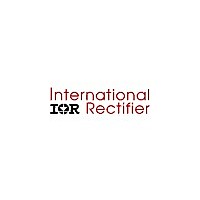IP1827TRPBF International Rectifier, IP1827TRPBF Datasheet - Page 20

IP1827TRPBF
Manufacturer Part Number
IP1827TRPBF
Description
IC DC-DC REG SYNC BUCK LGA
Manufacturer
International Rectifier
Series
iPOWIR™r
Type
Step-Down (Buck), PWM - Voltage Moder
Datasheet
1.IP1827TRPBF.pdf
(39 pages)
Specifications of IP1827TRPBF
Internal Switch(s)
Yes
Synchronous Rectifier
Yes
Number Of Outputs
1
Voltage - Output
0.6 V ~ 12 V
Current - Output
25A
Frequency - Switching
225kHz ~ 1.65MHz
Voltage - Input
1.5 V ~ 16 V
Operating Temperature
-40°C ~ 125°C
Mounting Type
*
Package / Case
*
Package
LGA - 7.7 x 7.7
Circuit
Single Output
Iout (a)
25
Switch Freq (khz)
250 - 1500
Input Range (v)
1.5 - 16
Output Range (v)
0.6 - 0.75*Vin
Internal Bias Ldo
Yes
Ocp Otp Uvlo Pre-bias Soft Start And
Remote Sense + Body Tracking + Temp Comp OCP
Pbf
PbF Option Available
Lead Free Status / RoHS Status
Lead free / RoHS Compliant
Available stocks
Company
Part Number
Manufacturer
Quantity
Price
Company:
Part Number:
IP1827TRPBF
Manufacturer:
TOSH
Quantity:
2 686
For our design, R
This selection is based on a trade‐off between two
considerations:
Hence, from Equation (9), R
In order to ensure that the Vosp and Vosm see balanced
impedances, it is advisable to use R
SOFT‐START PROGRAMMING
The soft‐start timing can be programmed by selecting the
soft‐start capacitance value. From (1), for a desired start‐
up time of the converter, the soft start capacitor can be
calculated by using:
Where T
For a start‐up time of 3ms, the soft‐start capacitor will be
0.099μF. Choose a 0.1μF ceramic capacitor.
INPUT CAPACITOR SELECTION
The ripple current generated during the on time of the
upper MOSFET should be provided by the input capacitor.
The RMS value of this ripple is expressed by:
Where:
1) The resistive divider should be as low impedance as
possible in order to have minimal impact on the
impedance seen at the Vosp and Vosm pins.
2) The resistive divider should have high enough
impedance so as to minimize the bleed current from
the output.
D is the Duty Cycle
I
Io is the output current.
For I
I
D
RMS
C
RMS
SS
is the RMS value of the input capacitor current.
R
o
start
V
=25A and D = 0.15, the I
(
V
comp
in
o
I
is the desired start‐up time (ms).
o
F)
20
R
bot
D
top
T
is selected to be 604 ohm.
January 24, 2011 | V1.2
start
||
1 ( D
R
bot
(
ms
top
)
= 1.21K.
402
)
RMS
0.033
comp
Ω
= 8.93A.
such that:
(13)
(12)
Highly Integrated 25A Single‐input Voltage,
(10)
(11)
Synchronous Buck Regulator
Ceramic capacitors are recommended due to their peak
current capabilities. They also feature low ESR and ESL at
higher frequency which enables better efficiency. For this
application, it is advisable to have 5x22uF 16V ceramic
capacitors ECJ‐3YX1C106K from Panasonic. In addition to
these, although not mandatory, a 1X330uF, 25V SMD
capacitor EEV‐FK1E331P may also be used as a bulk
capacitor and is recommended if the input power supply is
not located close to the converter.
INDUCTOR SELECTION
The inductor is selected based on output power, operating
frequency and efficiency requirements. A low inductor
value causes large ripple current, resulting in the smaller
size, and a faster response to a load transient but poor
efficiency and high output noise. Generally, the selection
of the inductor value can be reduced to the desired
maximum ripple current in the inductor. The optimum
point is usually found between 20% and 50% ripple of the
output current.
For the buck converter, the inductor value for the desired
operating ripple current can be determined using the
following relation:
Where:
If Δi ≈ 35%(I
0.29μH. Select L = 0.3μH.
The 59PR9874N from Vitec provides a compact inductor
suitable for this application.
V
V
V
Δi = Inductor Ripple Current
F
Δ
D – Duty Cycle
s
in
in
0
t
= Switching Frequency
L
– Turn on time
= Output Voltage
= Maximum input voltage
V
V
o
in
o
), then the output inductor is calculated to be
L
V
o
i
t
;
V
in
t
V
o
i
D
*
F
s
F
1
s
iP1827
97599
(14)












